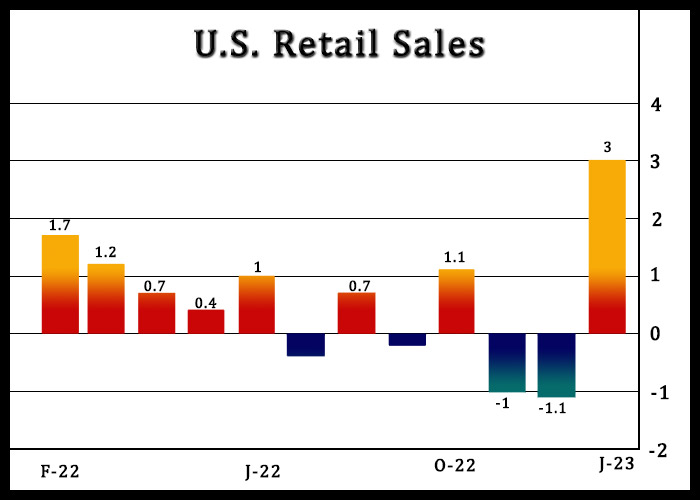U.S. Retail Sales Surge 3.0% In January, Much More Than Expected
Retail sales in the U.S. saw a substantial increase in the month of January, according to a report released by the Commerce Department on Wednesday.
The report said retail sales spiked by 3.0 percent in January after tumbling by 1.1 percent in December. Economists had expected retail sales to jump by 1.8 percent.
“The massive 3.0% m/m surge in retail sales in January may have been partly related to the unseasonably mild winter in the Northeast but, alongside the unexpected strength of payroll employment, it nevertheless suggests the economy will easily avoid a recession in the first quarter,” said Paul Ashworth, Chief North America Economist at Capital Economics.
The surge in retail sales was partly due to a significant rebound in sales by motor vehicle and parts dealers, which soared by 5.9 percent in January after plunging by 1.8 percent in December.
However, excluding the jump in auto sales, retail sales still shot up by 2.3 percent in January after falling by a revised 0.9 percent in December.
Ex-auto sales were expected to increase by 0.8 percent compared to the 1.1 percent slump originally reported for the previous month.
Sales by department stores skyrocketed by 17.5 percent during the month, while sales by food services and drinking places soared by 7.2 percent.
The report also showed substantial increases in sales by furniture and home furnishings stores, electronics and appliance stores, miscellaneous store retailers and clothing and accessories stores.
Closely watched core retail sales, which exclude automobiles, gasoline, building materials and food services, also jumped by 1.7 percent in January after falling by 0.7 percent in December.
“Regardless of potential weather effects or seasonal issues, the bottom line is that first-quarter consumption growth will be much stronger than we previously expected and, as a result first-quarter GDP will be positive,” said Ashworth.
He added, “Under those circumstances, there are now clearly upside risks to our view that the fed funds rate will peak slightly below 5%.”
Source: Read Full Article

